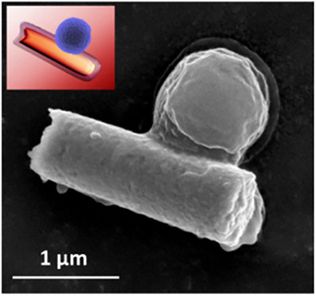Scientists can 3D-print a human cornea in ten minutes.
Posted in 3D printing
I, for one, still dream of flourishing in the future through advances in science and technology, but hopefully one that addresses societal inequities, retains the richness and diversity of our natural systems and indigenous cultures, rather than the somewhat simple and sterile futures depicted by many science fiction writers and futurists. Timothy Leary liked to remind us to remember our hippie roots, with their celebration of diversity and nature, and I hear him calling us again.
What used to be the province of acid-tripping tie-dye wearers has been co-opted by Silicon Valley—and we must be responsible about how we wield this new reality.
E xperts are suggesting quantum computing may render blockchain obsolete. As the tech giants such as Google and IBM are showing interest in Quantum computing the danger is evident. According to MIT Technology Review, this type of computing can hack the cryptography hash that universally secures the blockchain and in general the internet. This would suggest quantum computers may complete fraudulent transactions and steal coins. With its exponential power, quantum computers threaten blockchain’s future security.
Blockchain consists of encrypted nodes connected on a chain, which currently makes it almost impossible to hack. The order of entries adheres to the blockchain protocol, which makes it counterfeit-resistant.
To successfully hack a blockchain, you would need to alter both the targeted block and all of the blocks connected. Blockchains are synced throughout a peer-to-peer network. In this type of system, there is no central point of failure for hackers to penetrate. For a hacker to have a chance of penetrating the network, they would need to simultaneously alter at least 51% of the blockchain.
Posted in biotech/medical, genetics
By Andy Coghlan
Many people with cancer die not from their original tumour, but from secondary tumours that grow elsewhere around the body. Now we’re a step closer to understanding how cancers are able to spread.
Sakari Vanharanta of the Medical Research Council Cancer Unit at the University of Cambridge and his colleagues have been studying kidney cancer cells. They found that to spread, these cells tap into the same genetic “travel” machinery normally used by healthy white blood cells to roam around the body.
AMD at Computex 2018 unveiled what may turn out to be one of the most exciting GPU designs in town, the world’s first 7nm GPU, which packs as much as 32GB of high-bandwidth memory.
However, that product won’t really be available for purchase anytime soon, unless you’re in the business of developing machine learning (ML) and artificial intelligence (AI) products.
Posted in futurism
This resistance-training suit is a full-body workout.
New Speed Series MASS Suit INCLUDES: 1 Mass Suit Apparatus 2 Knee Straps 2 Foot Booties 2 Over the Shoe Straps 2 Handles 2 Wrist Straps 1 Mass Sports Bag, Agility and Quickness Book, Speed cones, and Speed Ladders. Bands 4 Heavy Strength Arm Bands 2 Medium Strength Knee Bands, 4 Medium Strength Leg Bands *Extra Knee bands can also be used as extra arms bands for greater resistance.

Engineers at the University of California San Diego have developed tiny ultrasound-powered nanorobots that can swim through blood, removing harmful bacteria and the toxins they produce.
These proof-of-concept nanorobots could one day offer a safe and efficient way to detoxify and decontaminate biological threat agents — providing an fast alternative to the multiple, broad-spectrum antibiotics currently used to treat life-threatening pathogens like MRSA bacteria (an antibiotic-resistant staph strain). MRSA is considered a serious worldwide threat to public health.
The secret to longevity may lie in the microbiome and the gut, according to researchers from McGill University, Canada.
It is already known that the bacteria living in our intestinal tract could have an influence on how well we age. Building on this knowledge, McGill University scientists fed fruit flies with a combination of probiotics and a herbal supplement called Triphala. These experiments were able to prolong the insects’ longevity by 65% and protect them against chronic diseases associated with aging.